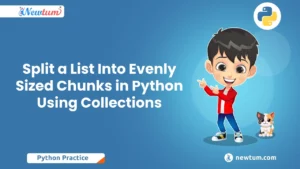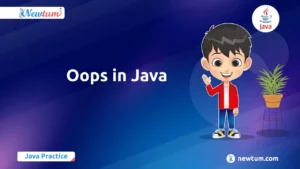“Unsigned and Signed Data Types in C” are crucial concepts that every budding coder needs to understand. They may sound like a mouthful, but trust me, they’re not as daunting as you might think! In this blog, we’ll break them down into bite-sized pieces, exploring what they mean, how they differ, and why they matter. Whether you’re just starting out or looking to brush up on your skills, this guide will help you master these data types and boost your coding confidence. Keep reading, and let’s dive in!
What are Unsigned and Signed Data Types in C?
In C programming, data types define the type of data a variable can store. When dealing with numeric types like int, char, short, or long, you can further classify them as signed or unsigned to control the range of values they can represent.
Signed Data Types
Signed data types can store both positive and negative values. By default, most numeric types in C (like int, short, or char) are signed unless explicitly declared otherwise. Internally, one bit (usually the most significant bit) is reserved to represent the sign—0 for positive, 1 for negative.
Example:
int num = -10; // signed int (can be negative or positive)
Unsigned Data Types
Unsigned data types can store only non-negative values (zero and positive integers). Since they don’t need a sign bit, the entire bit range is used for storing positive numbers, effectively doubling the upper limit of values that can be stored.
Example:
unsigned int count = 25; // Only positive values allowed
Commonly Used Unsigned and Signed Data Types in C:
| Type | Signed Example | Unsigned Example |
|---|---|---|
char | signed char | unsigned char |
short | signed short int | unsigned short int |
int | signed int | unsigned int |
long | signed long int | unsigned long int |
These modifiers help you make efficient use of memory and avoid logic errors when dealing with only positive values like indexes, sizes, or loop counters.
Difference Between Unsigned and Signed Data Types in C
The main difference between signed and unsigned data types lies in the range of values they can hold and how they use their bits.
Comparison Table: Signed vs Unsigned
| Feature | Signed Data Types | Unsigned Data Types |
|---|---|---|
| Value Range | Includes both negative and positive values | Only positive values (including zero) |
| Sign Bit | Yes (Most Significant Bit indicates sign) | No (All bits used for value) |
| Memory Usage | Same as unsigned, but part used for sign | Same as signed |
| Default Behavior | Most integer types are signed by default | Must be explicitly declared |
| Usage Examples | Temperatures, balance, altitude | Sizes, counters, array indices |
How the Sign Bit Works (MSB)
In binary representation, the most significant bit (MSB) of a signed data type is used to indicate the sign of the number:
0indicates a positive number1indicates a negative number
For example, in an 8-bit signed char:
01111111= +12710000000= -128
In contrast, for an unsigned char, all 8 bits represent the value:
11111111= 255- No negative representation possible.
This mechanism allows signed data types to represent both positive and negative values, while unsigned types can represent a larger range of positive values.
Syntax and Declaration of Unsigned and Signed Data Types in C
In C, you can explicitly declare whether a data type is signed or unsigned using the keywords signed and unsigned.
Declaration Syntax
// Signed declarations (can be negative or positive) signed int b = -10; signed char ch = -100; signed long num = -50000; // Unsigned declarations (only positive values) unsigned int a = 10; unsigned char letter = 200; unsigned long count = 100000;
Notes:
- If you don’t specify
signedorunsigned, C assumessignedby default forint,char, etc. - Always use
unsignedfor values that should never be negative (e.g., sizes, loop counters, memory addresses) to avoid unexpected behavior or overflow.
4. Memory Representation & Value Ranges
C data types are stored in memory as binary values using a fixed number of bits. The number of bits (e.g., 8-bit, 16-bit, 32-bit) determines how many distinct values a variable can represent.
Bit Size and Value Range
| Data Type | Bit Size | Signed Range | Unsigned Range |
|---|---|---|---|
char | 8 bits | -128 to 127 | 0 to 255 |
short | 16 bits | -32,768 to 32,767 | 0 to 65,535 |
int | 32 bits | -2,147,483,648 to 2,147,483,647 | 0 to 4,294,967,295 |
long | 64 bits | Very large range | Even larger range |
Binary Representation Diagram:
Let’s take an 8-bit signed and unsigned char:
| Type | Binary | Decimal Value |
|---|---|---|
signed char | 11111111 | -1 |
unsigned char | 11111111 | 255 |
Here’s how it works:
- Signed char (8-bit): Uses 1 bit for the sign and 7 bits for the value.
- Binary
10000001→ Decimal-127
- Binary
- Unsigned char (8-bit): All 8 bits used for value.
- Binary
10000001→ Decimal129
- Binary
Thus, the same binary pattern can represent different values depending on whether the type is signed or unsigned.
Real-Life Use of Unsigned and Signed Data Types in C (with Industry Examples)
Unsigned and Signed Data Types in C are not just concepts from textbooks—they are crucial in real-world applications across industries. From embedded systems to high-performance servers, companies rely on the proper use of these data types to ensure efficient, error-free software.
🔧 1. Embedded Systems – Used by: Bosch, Texas Instruments, Siemens
How it’s used:
In microcontrollers and firmware development, memory and processing power are limited. Unsigned types are preferred to fully utilize the positive value range and avoid unexpected negative values.
Example: Sensor Reading on a Microcontroller (Bosch)
unsigned int temperature = 255; // Max 8-bit sensor reading
signed int calibration_offset = -3;
int adjusted = temperature + calibration_offset;
printf("%d\n", adjusted);
Output:
252Why it matters:
Unsigned temperature ensures full sensor range is used (0–255). Signed offset allows for real-world calibration.
🖥️ 2. Operating Systems – Used by: Microsoft (Windows), Red Hat (Linux Kernel)
How it’s used:
The Linux Kernel and Windows OS use unsigned types for loop counters, memory addresses, file sizes—anything that should never be negative.
Example: File Size Calculation in Linux Kernel
unsigned long file_size = 4294967295; // 4GB
signed long space_left = -100;
if (file_size + space_left > 0) {
printf("Still space to write data.\n");
}
Output:
Still space to write data.Why it matters:
Unsigned ensures safe handling of large file sizes; mixing signed and unsigned types requires caution to prevent overflow.
📱 3. Game Development – Used by: Unity (C engine layer), Nintendo, EA Sports
How it’s used:
Unsigned types are widely used for frame counters, loop limits, and buffer indexing in performance-critical sections.
Example: Frame Counter in Game Loop
unsigned int frame = 0;
while (1) {
printf("Frame: %u\n", frame++);
if (frame > 60) break;
}
Output:
Frame: 0
Frame: 1
...
Frame: 60Why it matters:
Games often run at 60 FPS; unsigned prevents negative loop errors and maximizes efficiency.
📡 4. Networking Systems – Used by: Cisco, Juniper, Broadcom
How it’s used:
Packet sizes, sequence numbers, and checksums are stored using unsigned types to prevent wraparound or negative logic issues.
Example: Packet Size Validation
unsigned int packet_size = 65535; // Max for UDP
if (packet_size > 1500) {
printf("Fragment packet or switch to TCP.\n");
}
Output:
Fragment packet or switch to TCP.Why Do These Companies Care about Unsigned and Signed Data Types in C?
- Avoid bugs from unintended sign conversion
- Optimize memory usage on hardware-constrained devices
- Ensure consistent logic in real-time and critical systems
- Prevent overflows/underflows that can cause security issues
Are you looking to write and test code on the fly? Our AI-powered c online compiler lets you instantly write, run, and troubleshoot your C programs effortlessly. With AI assistance, it’s like having a coding buddy right by your side. Give it a whirl today!
Conclusion
Completing ‘Unsigned and Signed Data Types in C’ deepens understanding of fundamental programming concepts, enhancing coding proficiency. Feeling accomplished? Dive into more programming adventures with Newtum to explore Java, Python, C++, and more. The best way to learn is by doing! Start coding today.
Edited and Compiled by
This article was compiled and edited by @rasikadeshpande, who has over 4 years of experience in writing. She’s passionate about helping beginners understand technical topics in a more interactive way.



